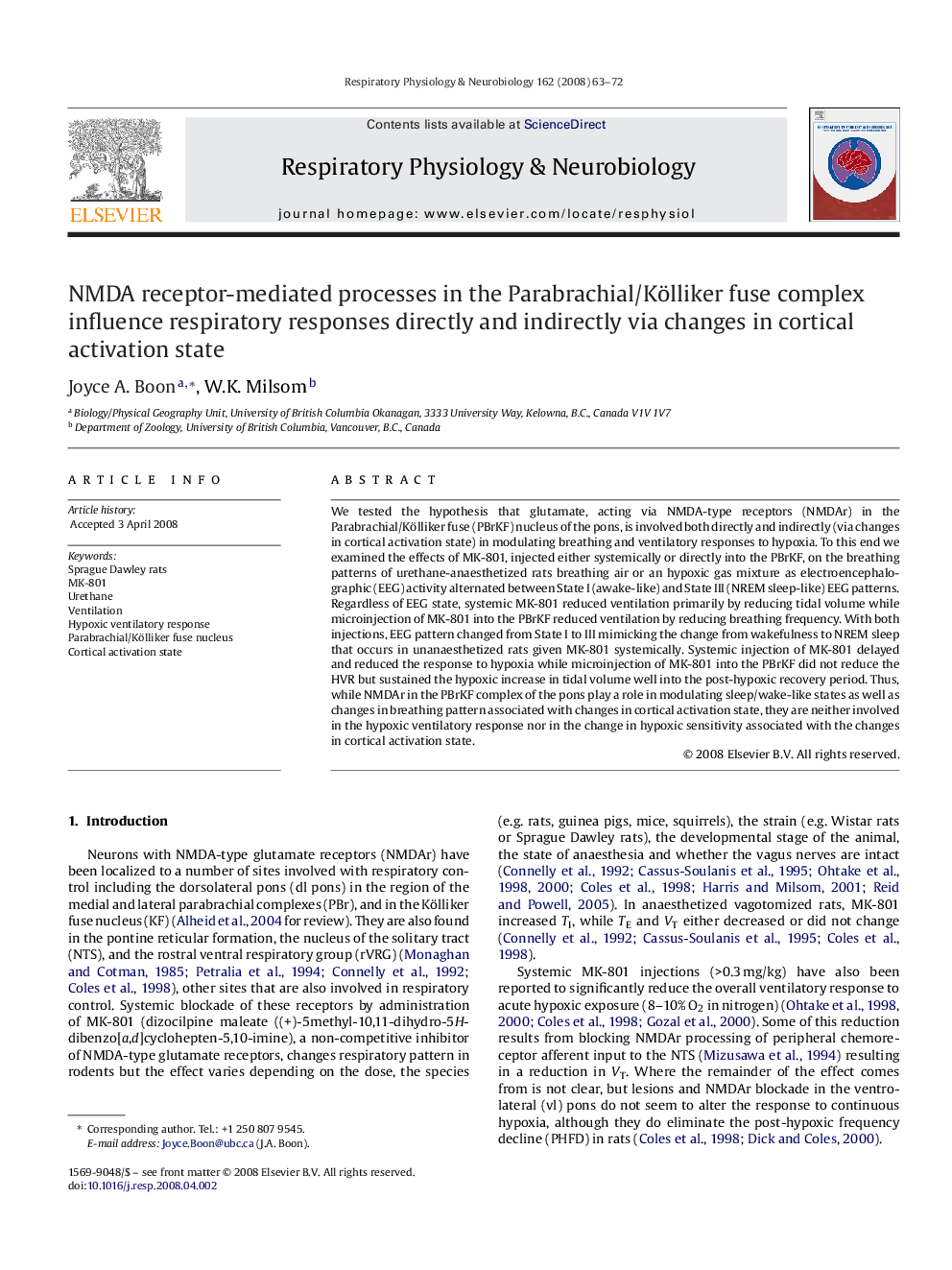| Article ID | Journal | Published Year | Pages | File Type |
|---|---|---|---|---|
| 2848102 | Respiratory Physiology & Neurobiology | 2008 | 10 Pages |
We tested the hypothesis that glutamate, acting via NMDA-type receptors (NMDAr) in the Parabrachial/Kölliker fuse (PBrKF) nucleus of the pons, is involved both directly and indirectly (via changes in cortical activation state) in modulating breathing and ventilatory responses to hypoxia. To this end we examined the effects of MK-801, injected either systemically or directly into the PBrKF, on the breathing patterns of urethane-anaesthetized rats breathing air or an hypoxic gas mixture as electroencephalographic (EEG) activity alternated between State I (awake-like) and State III (NREM sleep-like) EEG patterns. Regardless of EEG state, systemic MK-801 reduced ventilation primarily by reducing tidal volume while microinjection of MK-801 into the PBrKF reduced ventilation by reducing breathing frequency. With both injections, EEG pattern changed from State I to III mimicking the change from wakefulness to NREM sleep that occurs in unanaesthetized rats given MK-801 systemically. Systemic injection of MK-801 delayed and reduced the response to hypoxia while microinjection of MK-801 into the PBrKF did not reduce the HVR but sustained the hypoxic increase in tidal volume well into the post-hypoxic recovery period. Thus, while NMDAr in the PBrKF complex of the pons play a role in modulating sleep/wake-like states as well as changes in breathing pattern associated with changes in cortical activation state, they are neither involved in the hypoxic ventilatory response nor in the change in hypoxic sensitivity associated with the changes in cortical activation state.
